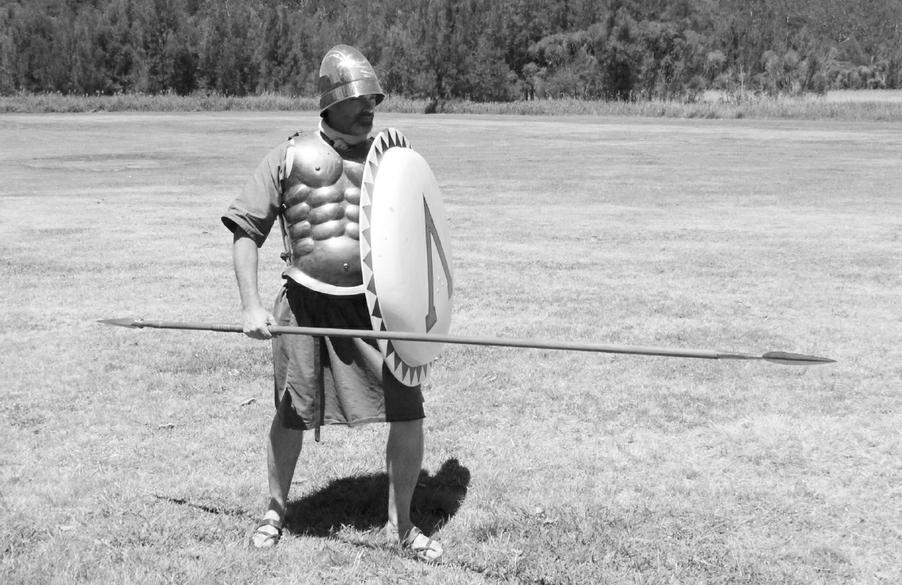

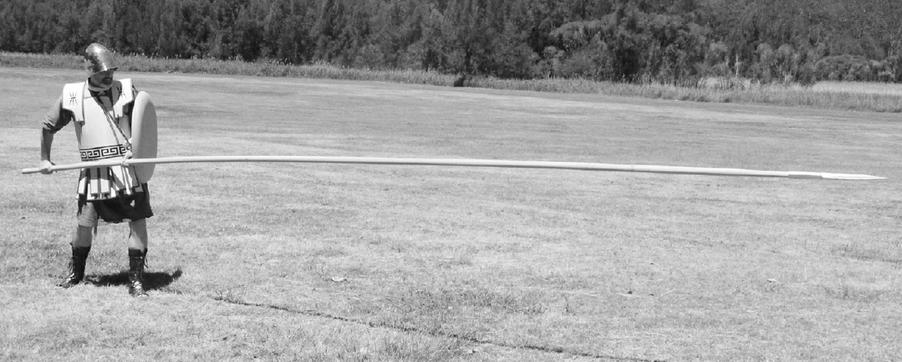
Plate 1: Reconstructions of the equipment of the classical hoplite c.400BC (top), and the equipment of the reformed Iphicratean peltast, c.374BC (bottom).¹

Plate 2: The butt of a Macedonian sarissa – Shefton Collection, Great North Museum, Newcastle upon Tyne #111.²
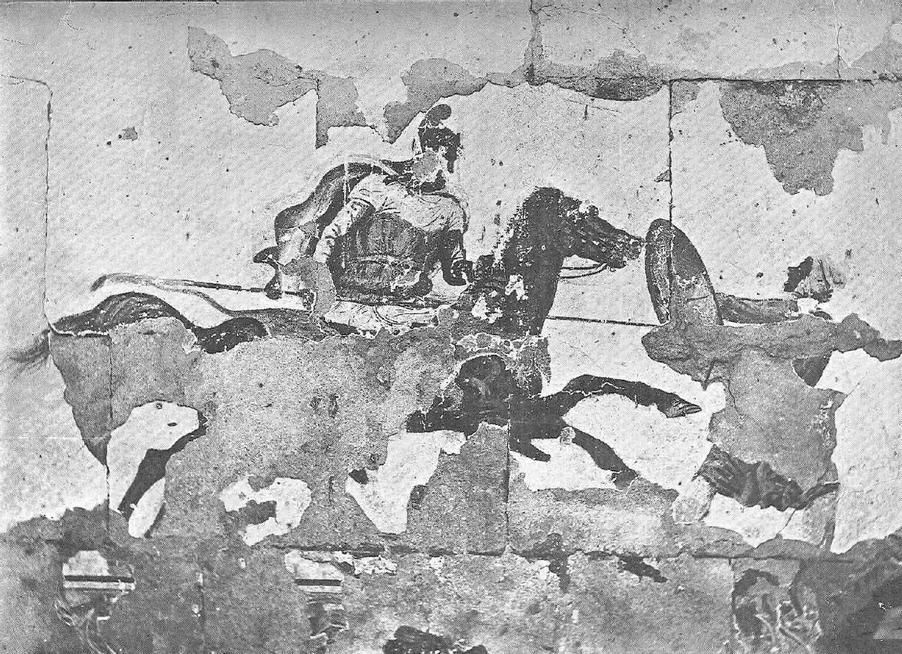
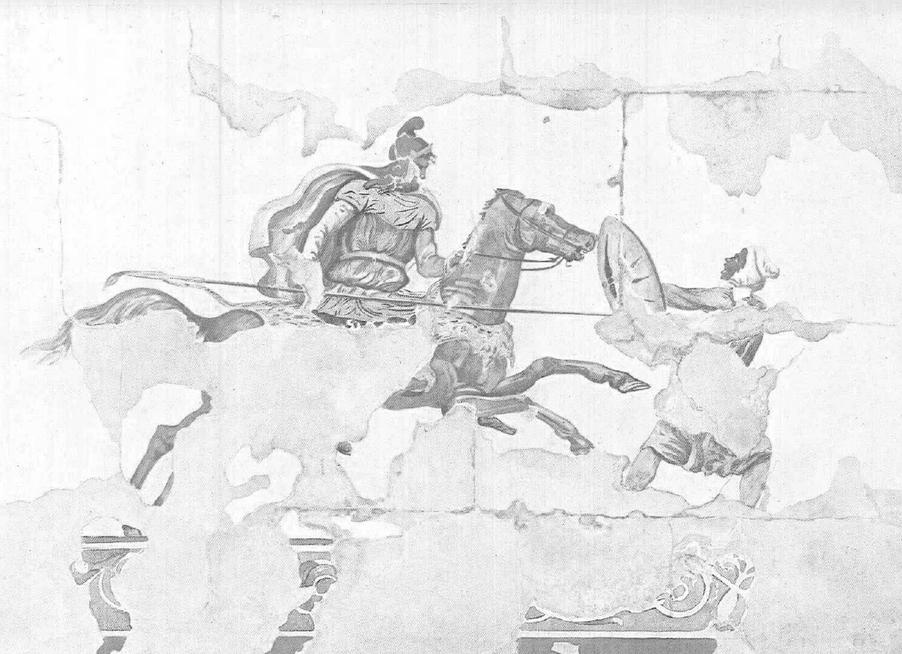
Plate 3: Photo (top) and reconstruction (bottom) of a depiction of a Hellenistic cavalryman from Kinch’s Tomb – Lefkadia, Macedonia.³
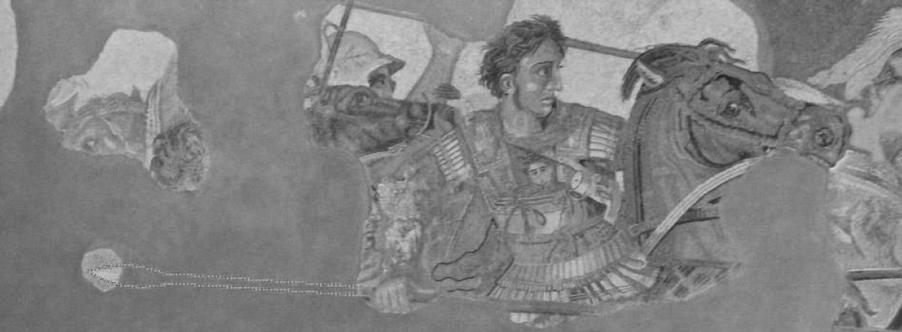
Plate 4: Detail of the Alexander Mosaic (Naples Archaeological Museum #10020) showing Alexander wielding a cavalry lance.⁴
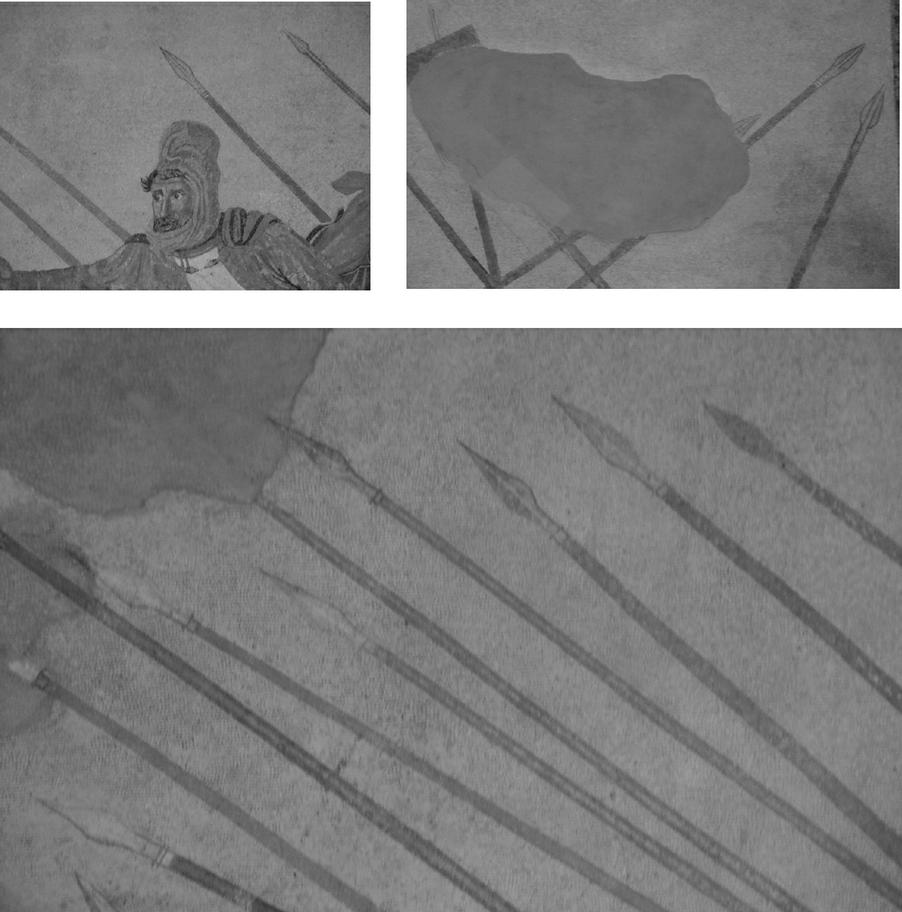
Plate 5: Detail of the Alexander Mosaic showing the heads of Macedonian sarissae.⁵
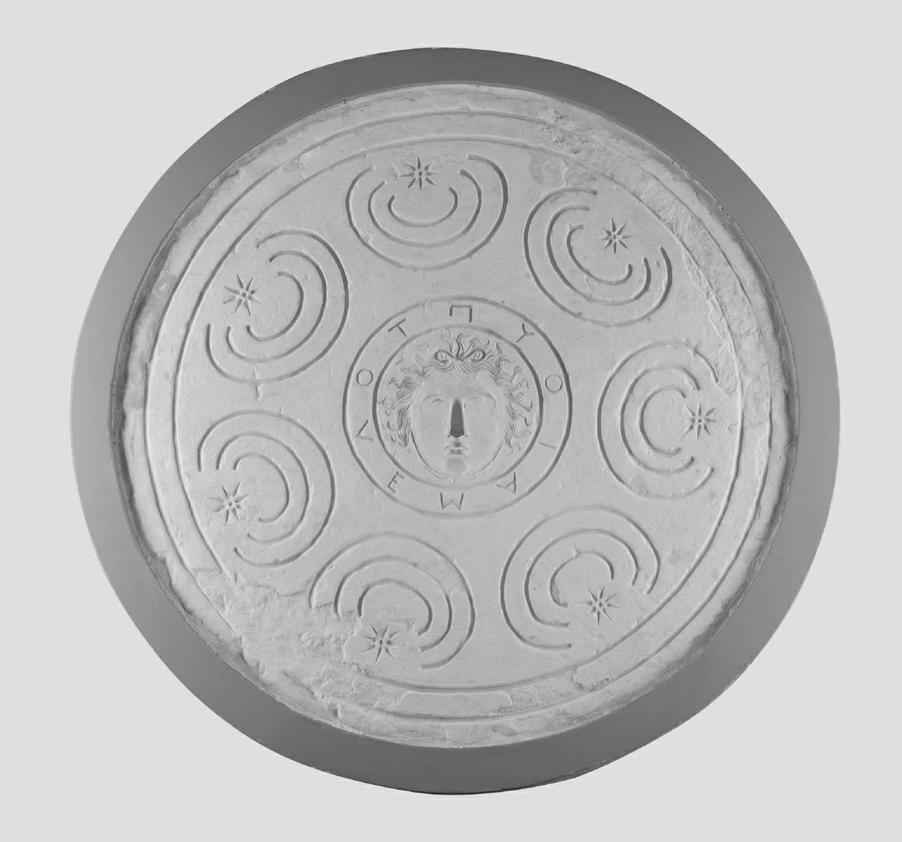
Plate 6: The terracotta mould for the facing of shields of Ptolemaic phalangites (third century BC) – Allard, Pierson Museum, Amsterdam #7879.⁶
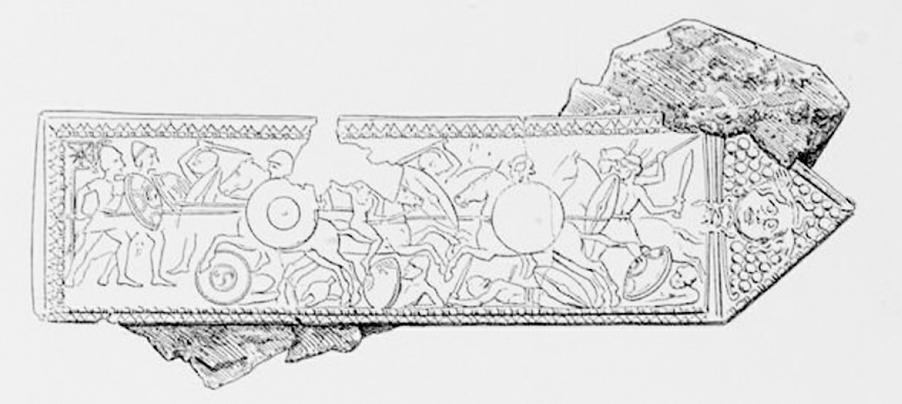
Plate 7: Two phalangites (left) engage enemy cavalry and infantry – line drawing of a bronze plaque from Pergamon.⁷
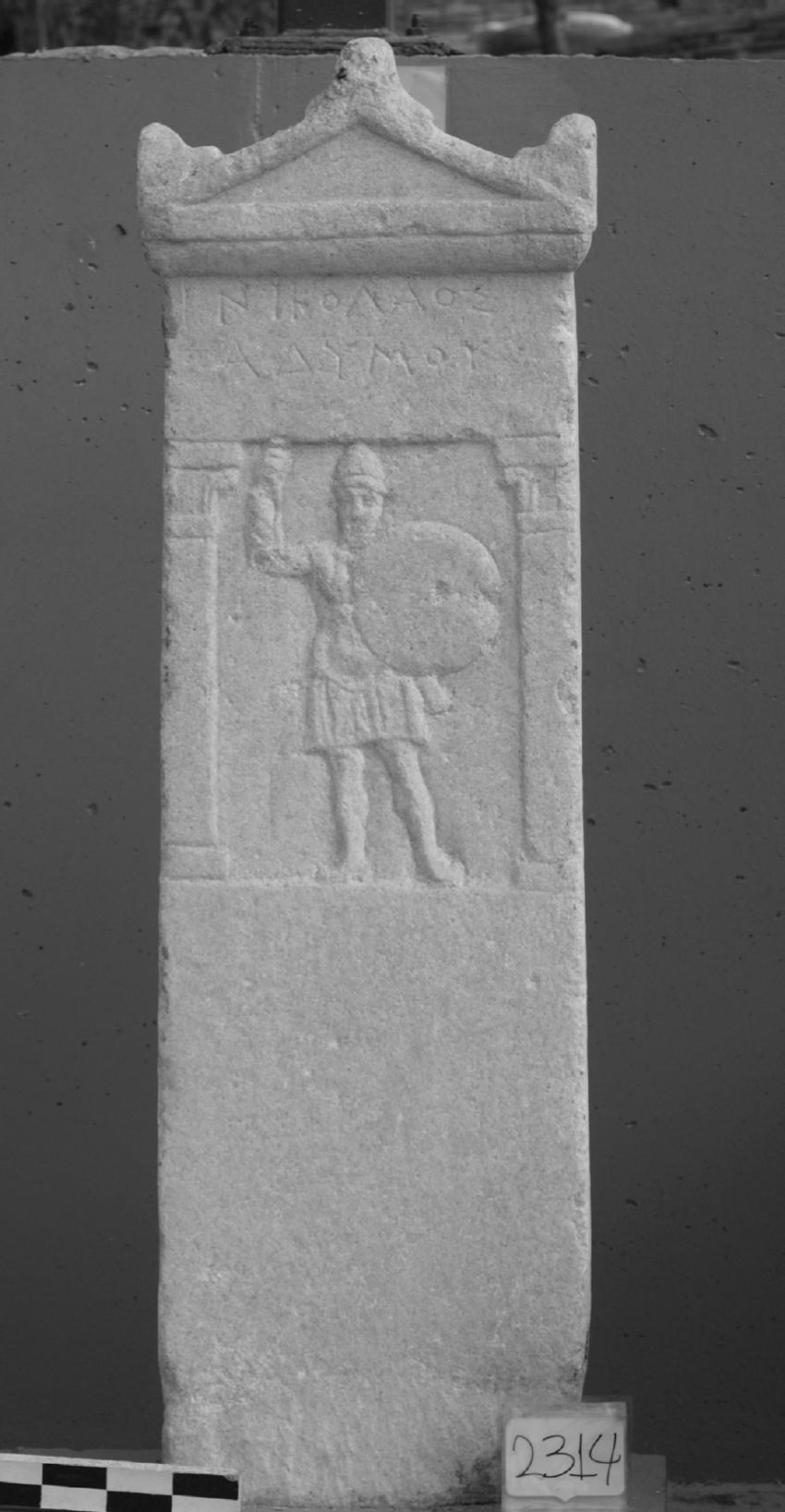
Plate 8: Stele of Nikolaos, son of Hadymos, showing a phalangite carrying the peltē.⁸
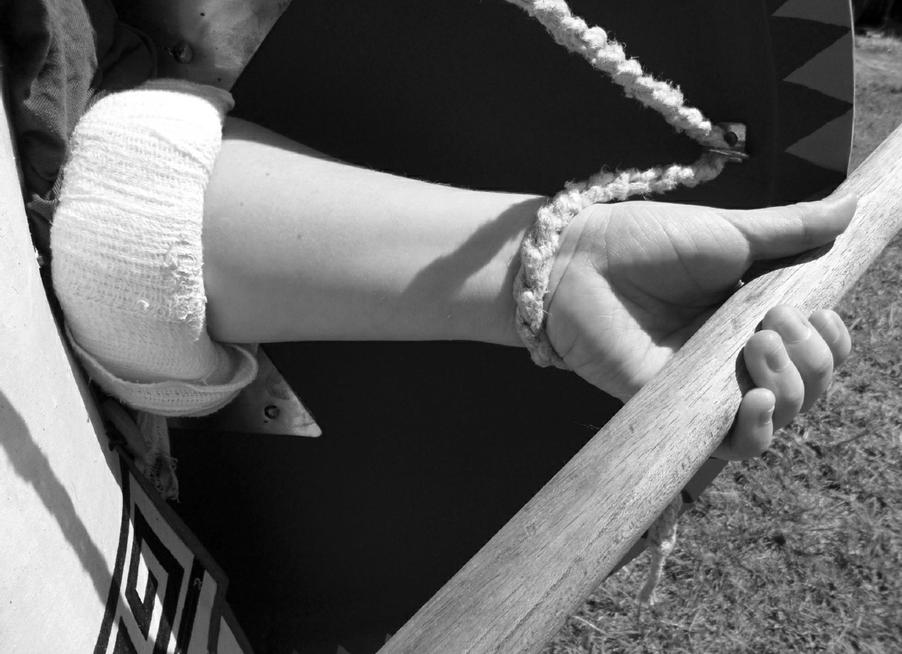
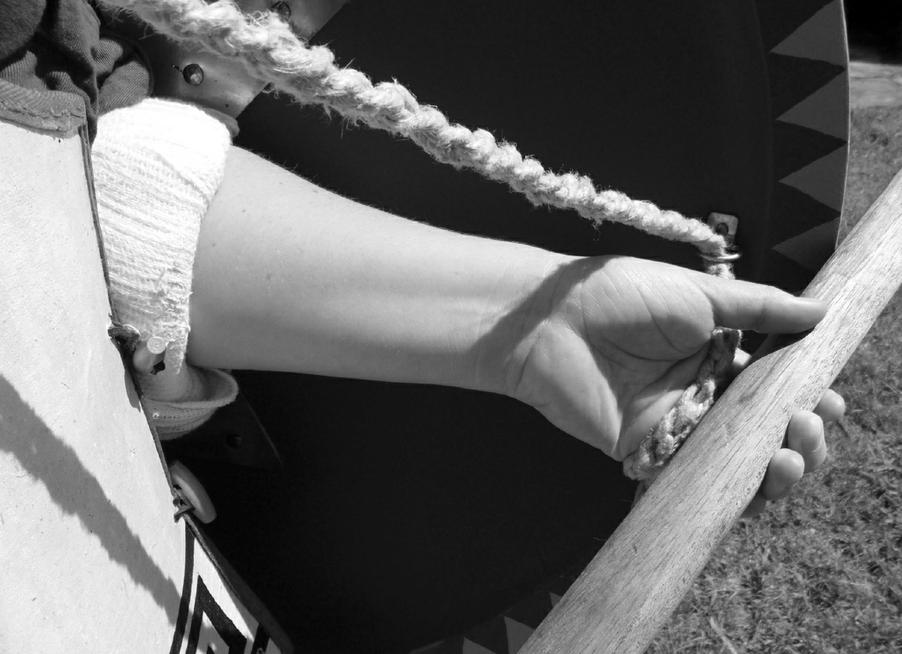
Plate 9: Different ways of using the ochane: as a wrist strap (top), as a hand grip (bottom).⁹
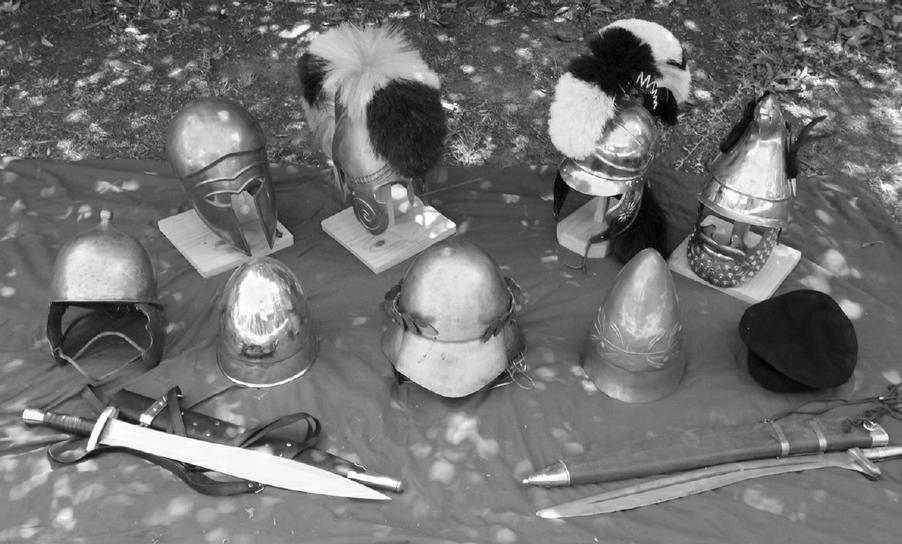
Plate 10: Replica helmets, headwear and swords of the Hellenistic Age.¹⁰ Back Row (L to R): Corinthian helmet, Attic helmet, Thracian helmet, Masked Phrygian helmet.
Middle Row (L to R): Cap helmet, rounded pilos helmet, Boeotian helmet, Conical Pilos helmet, Kausia.
Front Row (L to R): Xiphos sword, Macharia sword.
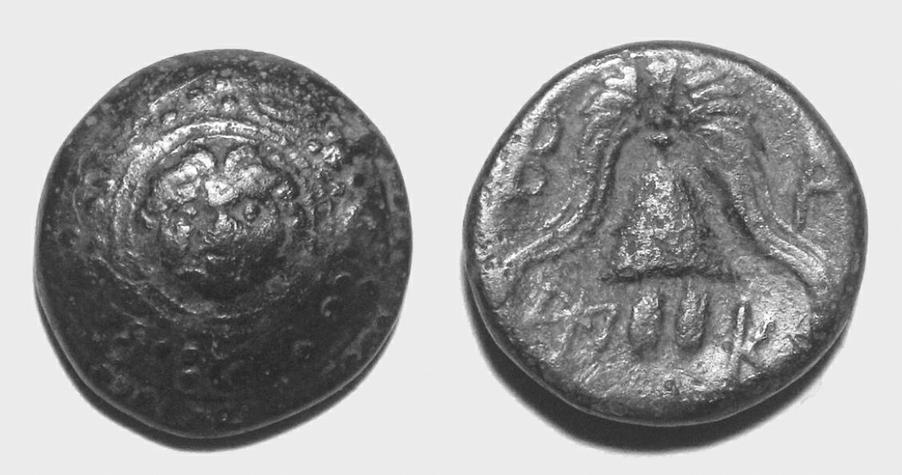
Plate 11: A ‘shield coin’ of Alexander the Great showing the facing of a Macedonian shield on the obverse side and a crested pilos helmet on the reverse side.¹¹
METAL: AE DENOMINATION: Hemiobol
WEIGHT: 3.95g DIAMETER: 15mm REGION: Asia Minor
MINT: Miletus DATE: late 334BC or early 333BC
OBV: Macedonian shield with five sets of concentric crescents and five sets of quincunx dots in an alternating pattern around edge; encircled Gorgon ‘s head in centre.
REV: Macedonian pilos helmet with transverse crest and cheek pieces (facing front); double axe in lower left; K (mint mark) in lower right; INSCRIPTION: B_A (BA∑IΛEΩ∑_AΛEΞAN∆POY = ‘of King Alexander’). DIE AXIS: CONDITION: VF SERIES IDENTIFICATION: Price 2064
NOTES: Plant (Greek Coins Types and their Identification (London, Seaby, 1979)) has no reference to a coin of this type in his catalogue. Price (The Coinage in the name of Alexander the Great and Philip Arrhidaeus Vol.I: Introduction and Catalogue (London, British Museum Press, 1991)) does not list a coin of this type with this die axis. Price (p.32) suggests that the Gorgon head can be identified with the head of Fear (Φόβος) which ties this design with the ‘shield of Herakles’ (see Hesiod, The Shield, 144) and the coinage to other Herakles based issues under Alexander. Coins of this type were found in the Caria Hoard (1986) which confirms the region of their issue. The coin may commemorate the actions of a unit of hypaspists at siege of Halicarnassus in late 334BC.
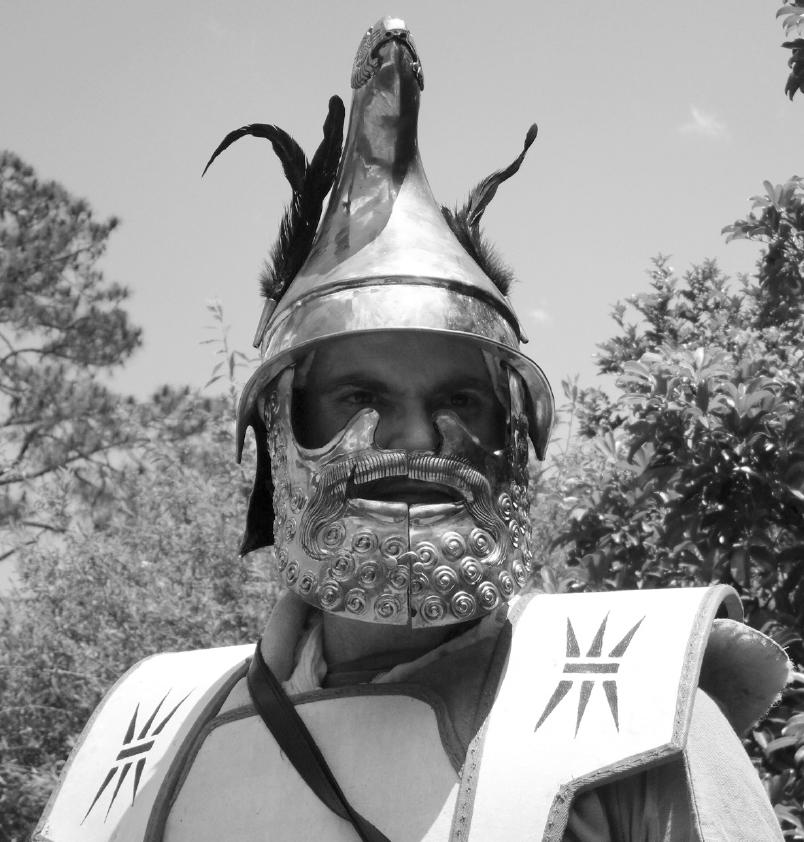
Oblique posture: can rotate the head to face the front and look directly ahead.
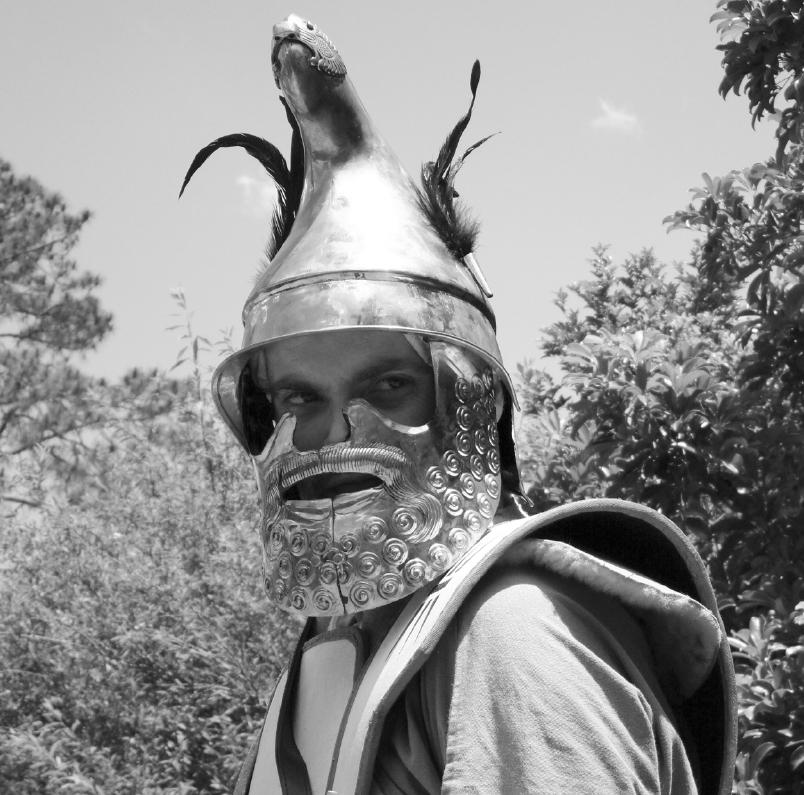
Side-on posture: cannot rotate the head to face the front and look directly ahead.
Plate 12: (top and above) How body posture dictates the axis of the head when wearing a masked Phrygian helmet.¹²
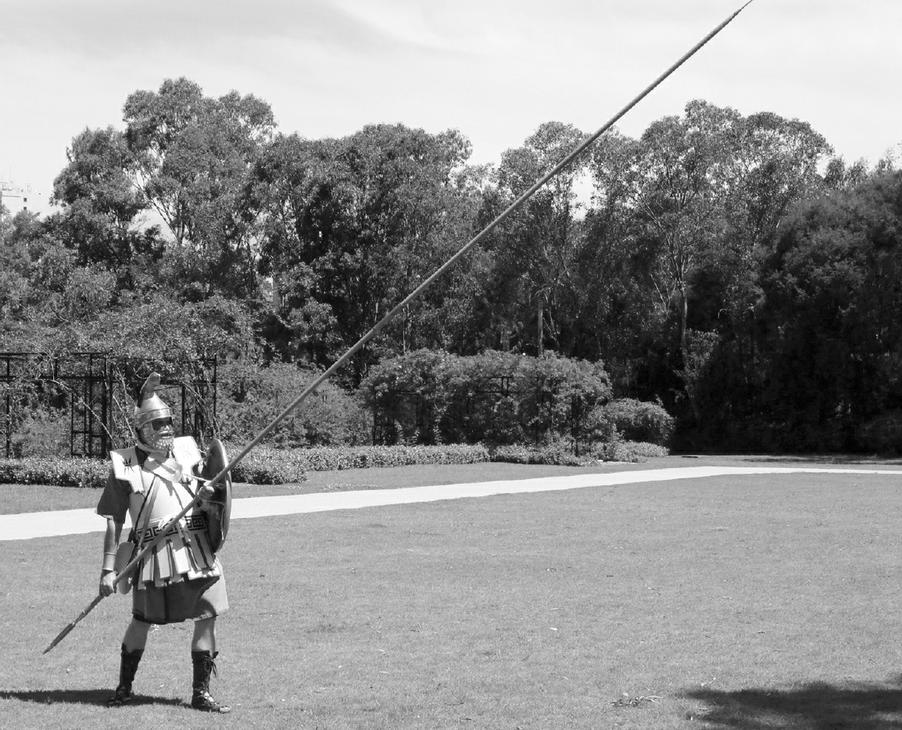
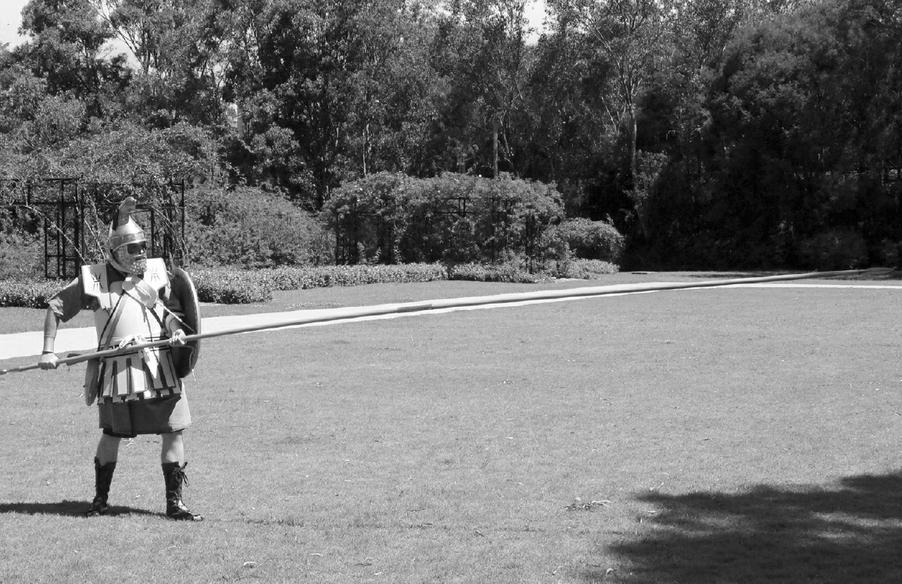
Plate 13: Phalangite drill – moving a pike angled forwards at 45° (top) to lowered for combat (bottom).¹³
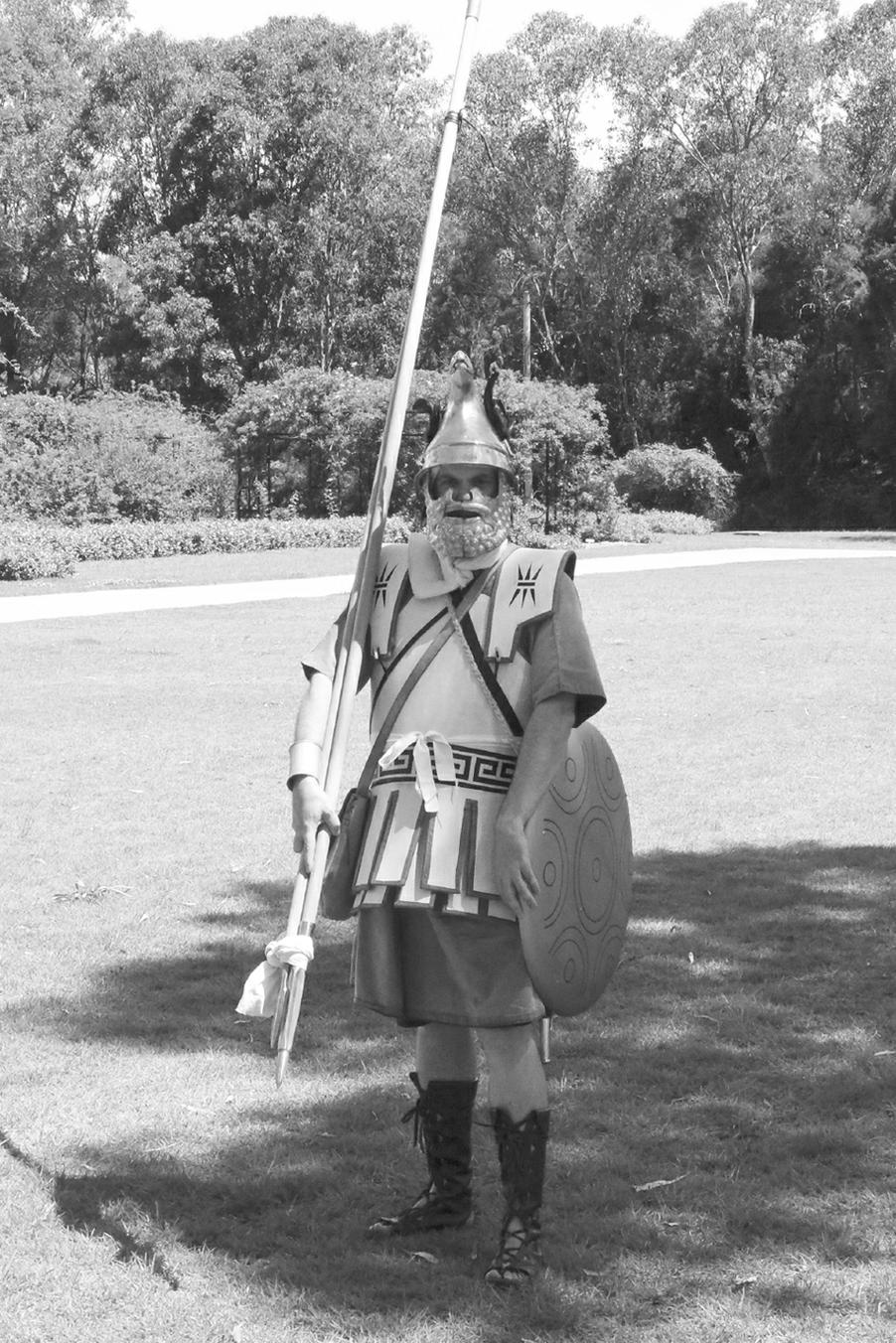
Plate 14: Marching with a sarissa separated into two parts and sloped over the shoulder.¹⁴


Plate 15: Recording the effective range and trajectory of an attack delivered with a sarissa held at waist height (top: ‘ready position’; bottom: at full extension).¹⁵


Plate 16: Recording the effective range and trajectory of an attack delivered with a sarissa couched into the armpit (top: ‘ready position’; bottom: at full extension).¹⁶
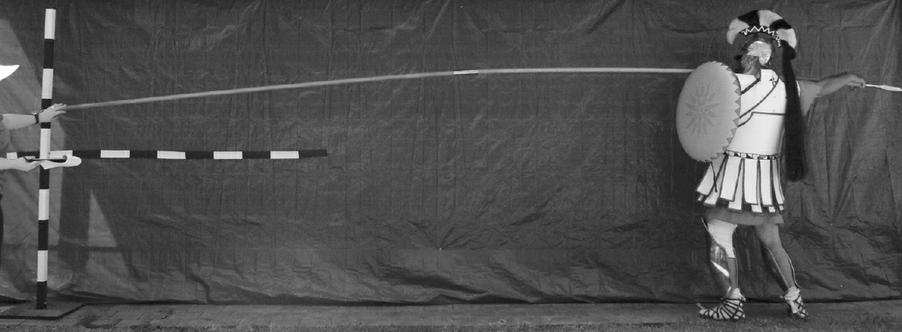
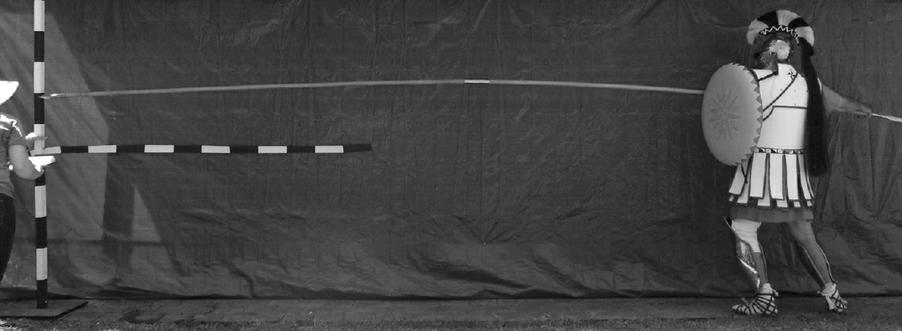
Plate 17: Recording the effective range and trajectory of an attack delivered with a sarissa held above shoulder height (top: ‘ready position’; bottom: at full extension).¹⁷
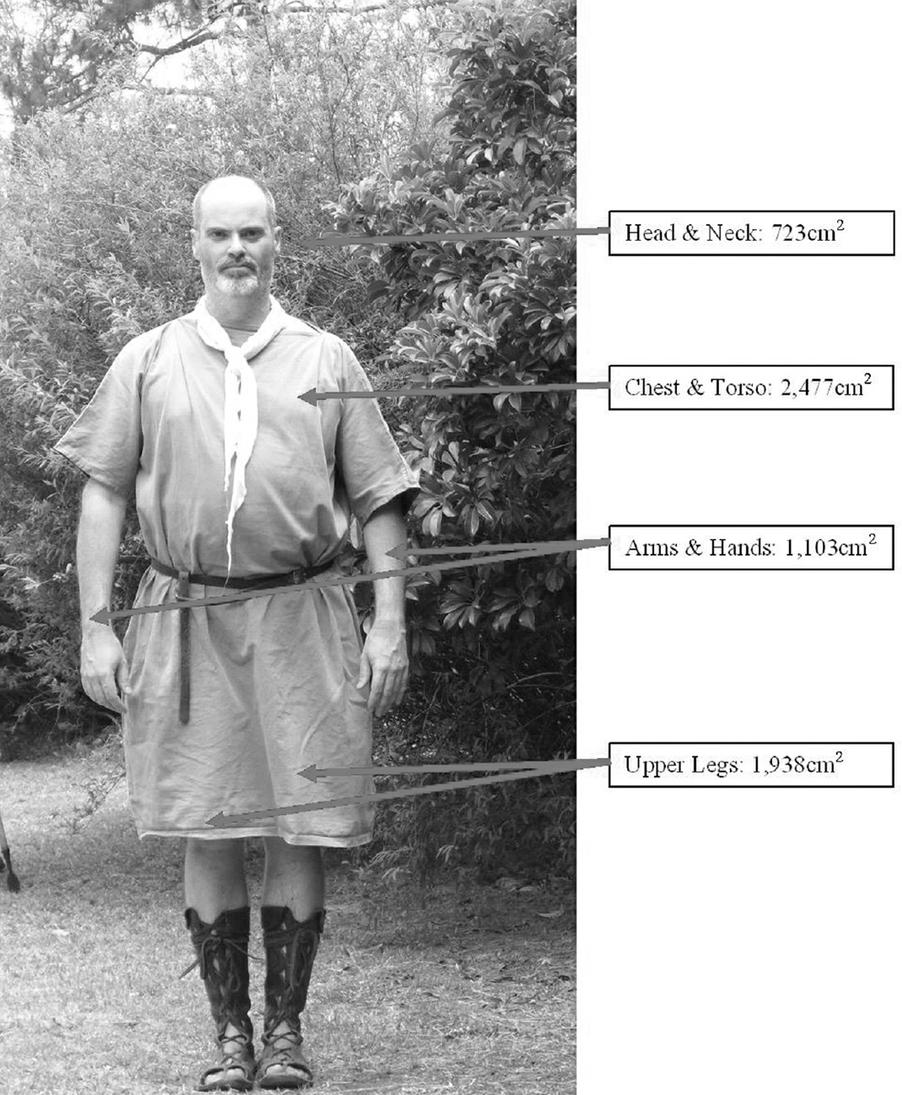
Plate 18: The exposed areas on a phalangite when wearing no armour.¹⁸
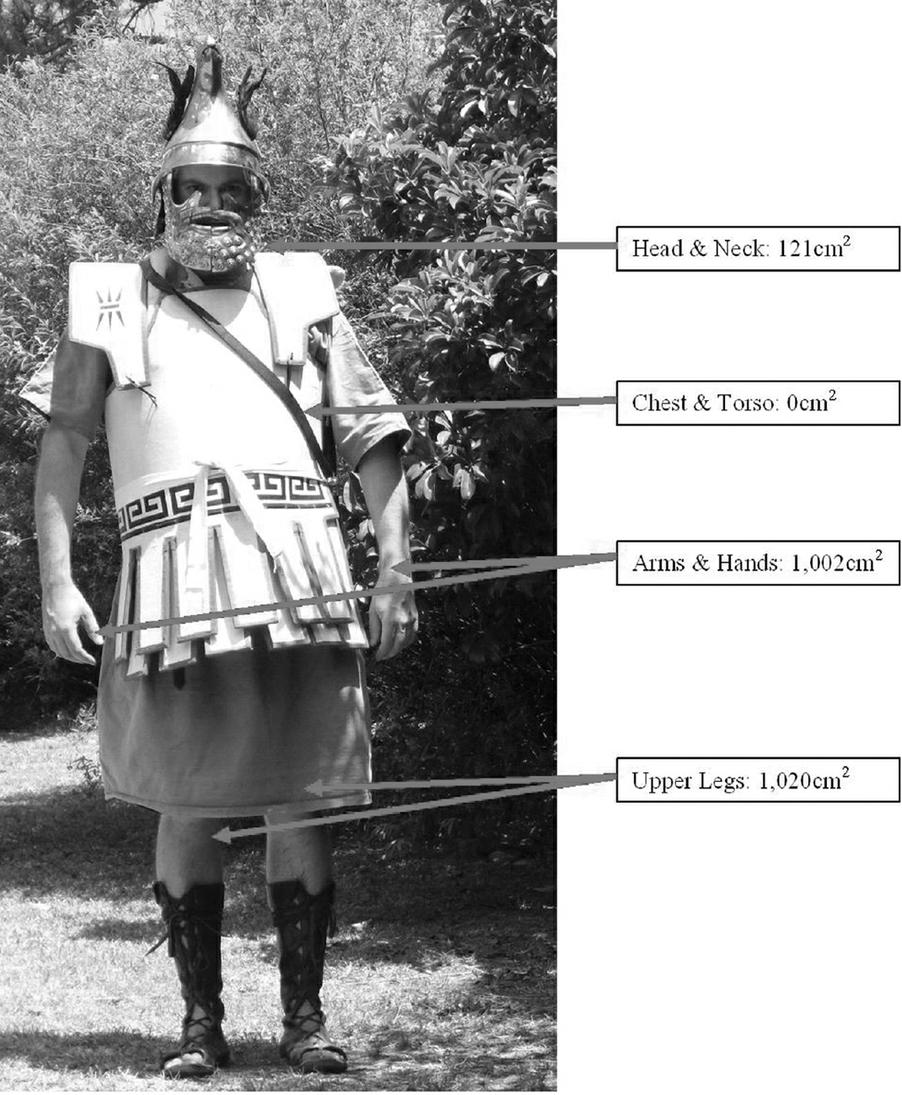
Plate 19: The exposed areas on a phalangite when wearing a helmet and armour.¹⁹
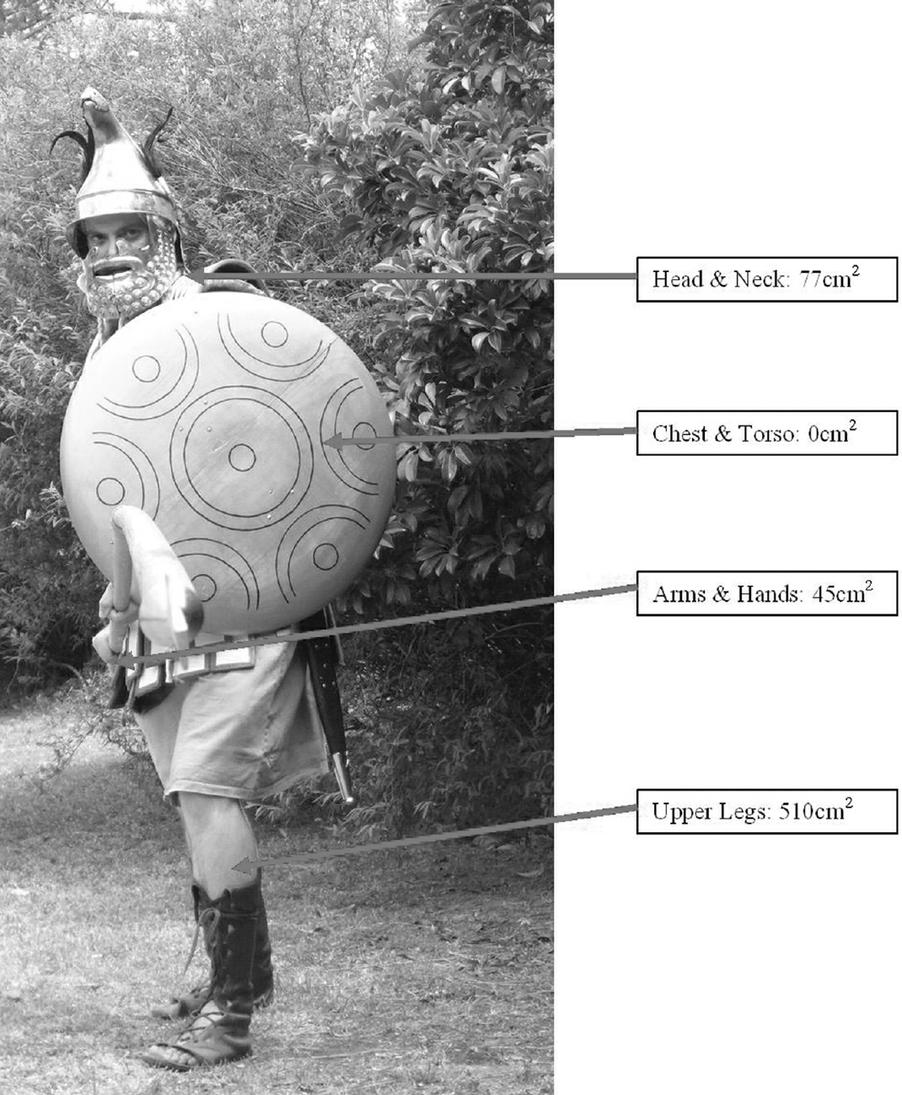
Plate 20: The exposed areas on a phalangite adopting an oblique posture with shield and pike.²⁰